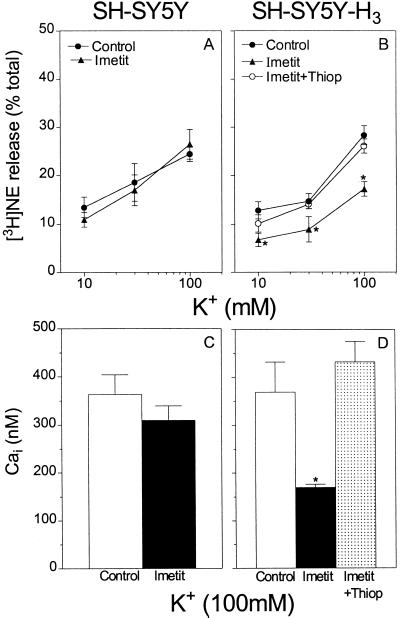Figure 4.
Activation of H3R with the selective agonist imetit (100 nM) attenuates both Ca2+ influx and resulting exocytosis of tritiated norepinephrine (NE) in K+-depolarized, cultured neuroblastoma cells transfected with the H3R (SH-SY5Y-H3; B and D). Parent SH-SY5Y cells fail to respond to imetit (A and C). (Upper) Release of [3H]norepinephrine from SH-SY5Y cells (A) and SH-SY5Y-H3 cells (B), by depolarization with 10–100 mM K+, in the absence and presence of imetit (100 nM), either alone or in combination with the selective H3R antagonist thioperamide (300 nM; B). Points represent mean [3H]norepinephrine release expressed as a percentage of total [3H]norepinephrine content (± SEM; n = 3–7). *, P < 0.05 from the corresponding control [3H]norepinephrine level by unpaired t test. (Lower) Peak Cai concentration in SH-SY5Y cells (C) and SH-SY5Y-H3 cells (D) depolarized with 100 mM K+ in the absence and presence of imetit ± thioperamide (D). Bars represent means (± SEM) of 157 control and 174 imetit-treated SH-SY5Y cells (C), and 232 control, 197 imetit-treated, and 231 imetit + thioperamide-treated SH-SY5Y-H3 cells (D). *, P < 0.05 from the corresponding control peak Cai level by unpaired t test.

